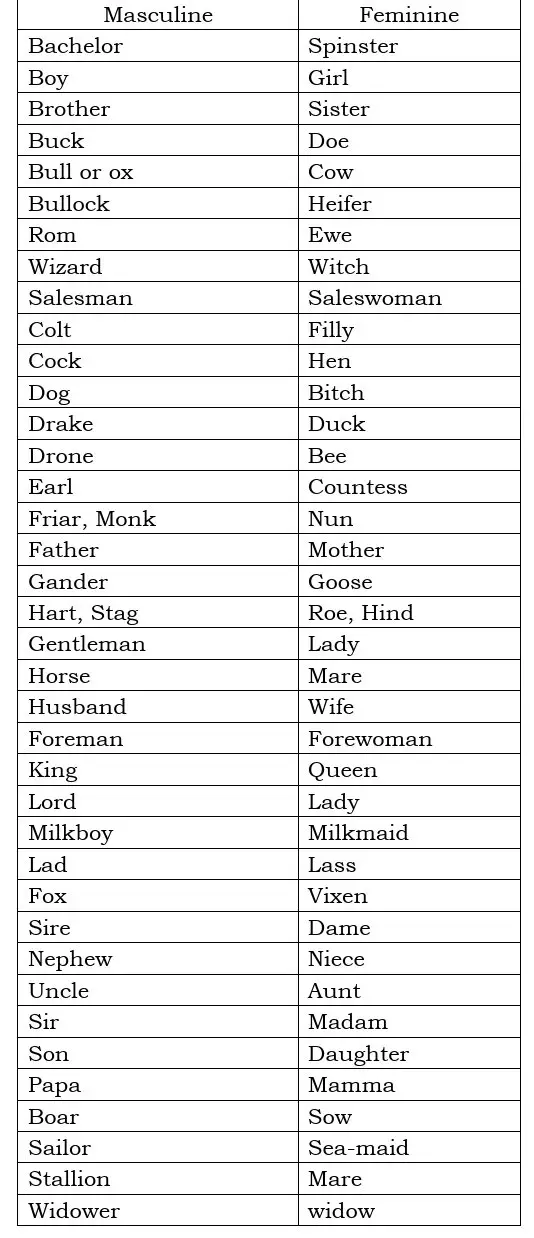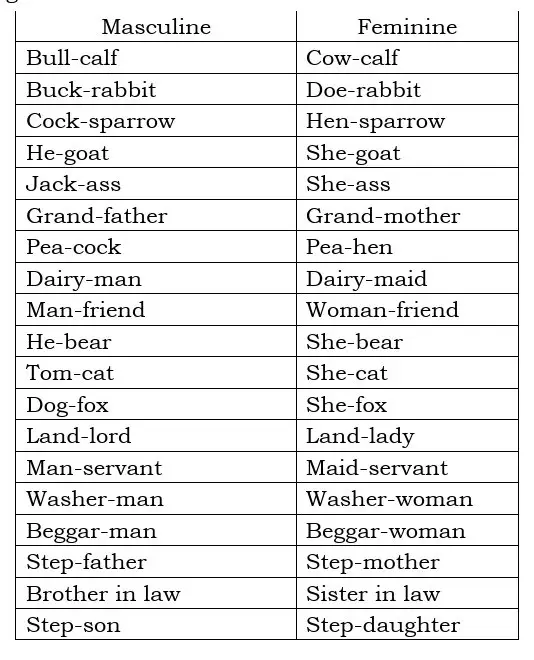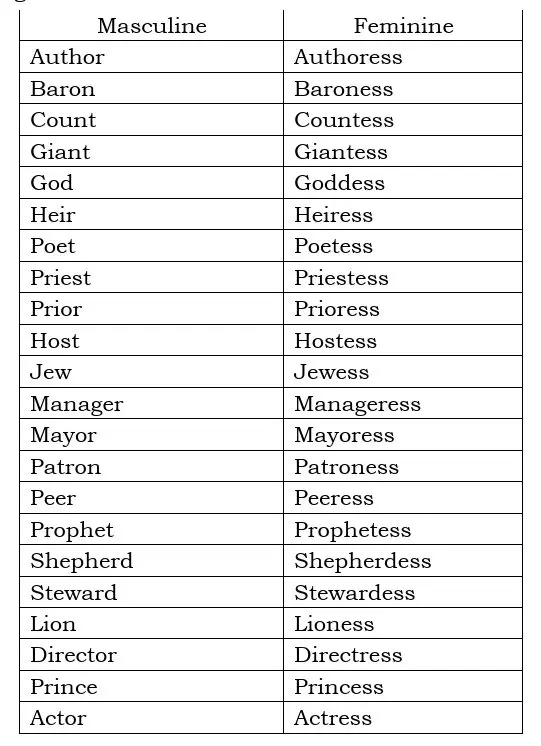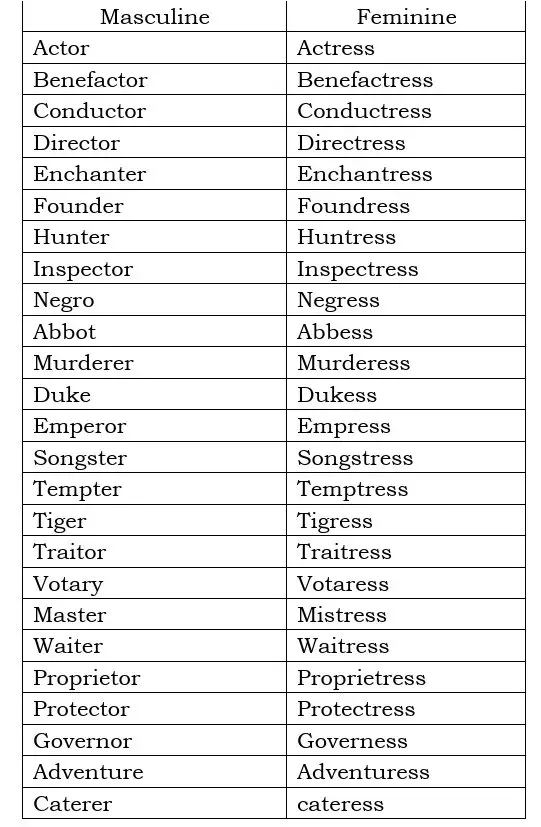Masculine and Feminine Gender: Rules and List
Gender is from Latin genus meaning kind or sort. The difference of sex in nature is called the difference of gender in grammar. We know all living things are normally either of the male or female sex.
The noun that denotes male is called Masculine Gender; as, man, husband, brother, son, boy king, hero, lion, etc.
The noun that denotes female is called Feminine Gender; as, woman, wife, sister, daughter, girl, queen, heroin, lioness, etc
The noun that denotes either male, as well as the female, is called Common Gender; as, friend, child, pupil, parent, servant, thief, baby, infant, neighbour, monarch.
The noun that denotes a thing of no sex, that is, a thing without life is called Neutral Gender; as, book, pen, room, tree, window, street, door, table, desk, etc.
Neutral literally means ‘neither’.

PERSONIFICATION
Objects without life are often personified especially in poetry or elevated prose. They are spoken of as if they were living beings. We then regard them as masculines or feminines as per the following rules:
The masculine gender is often applied to objects known for strength or violence; as, sun, summer, winter, ocean, thunder, death, time, war, etc







